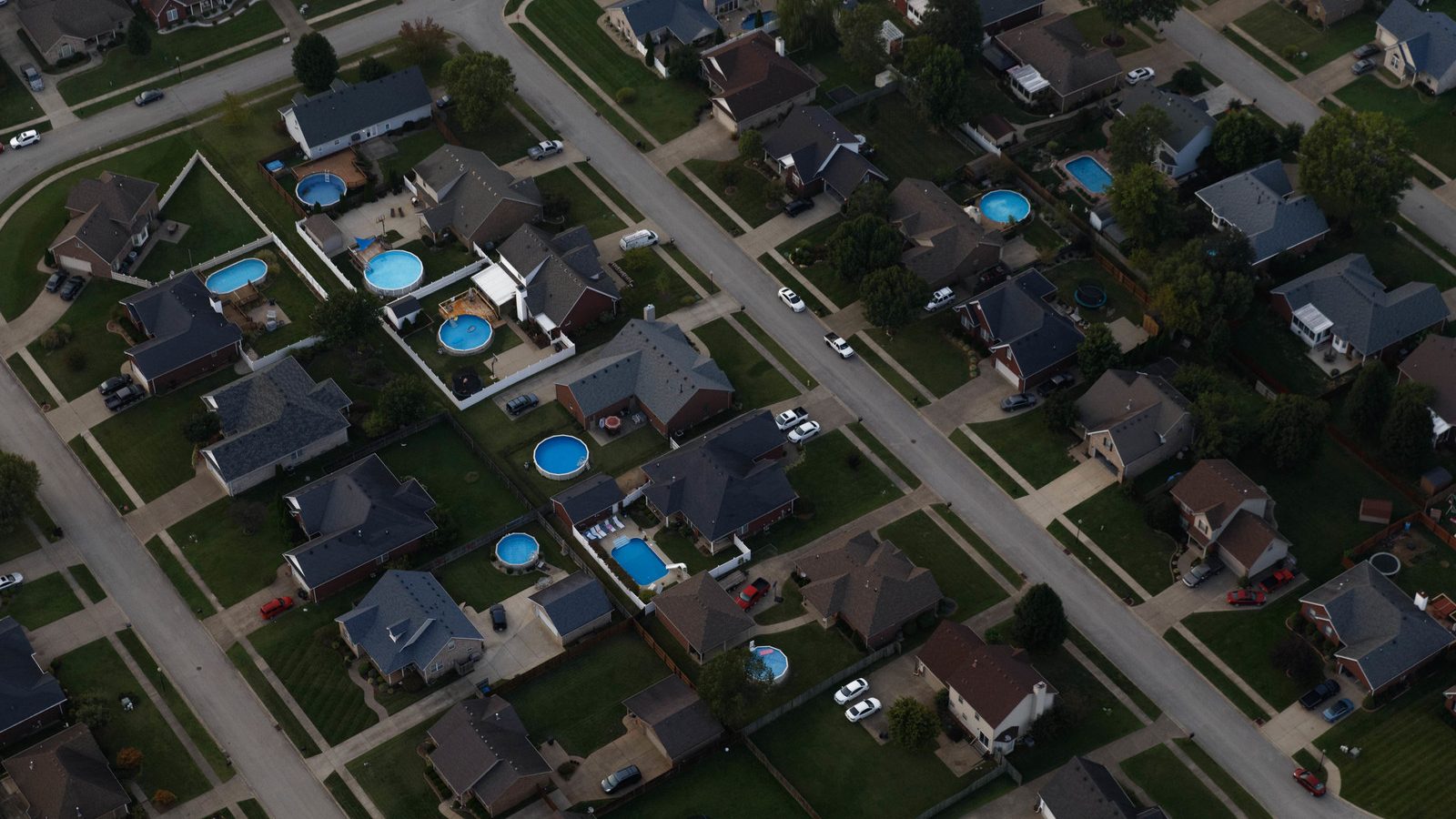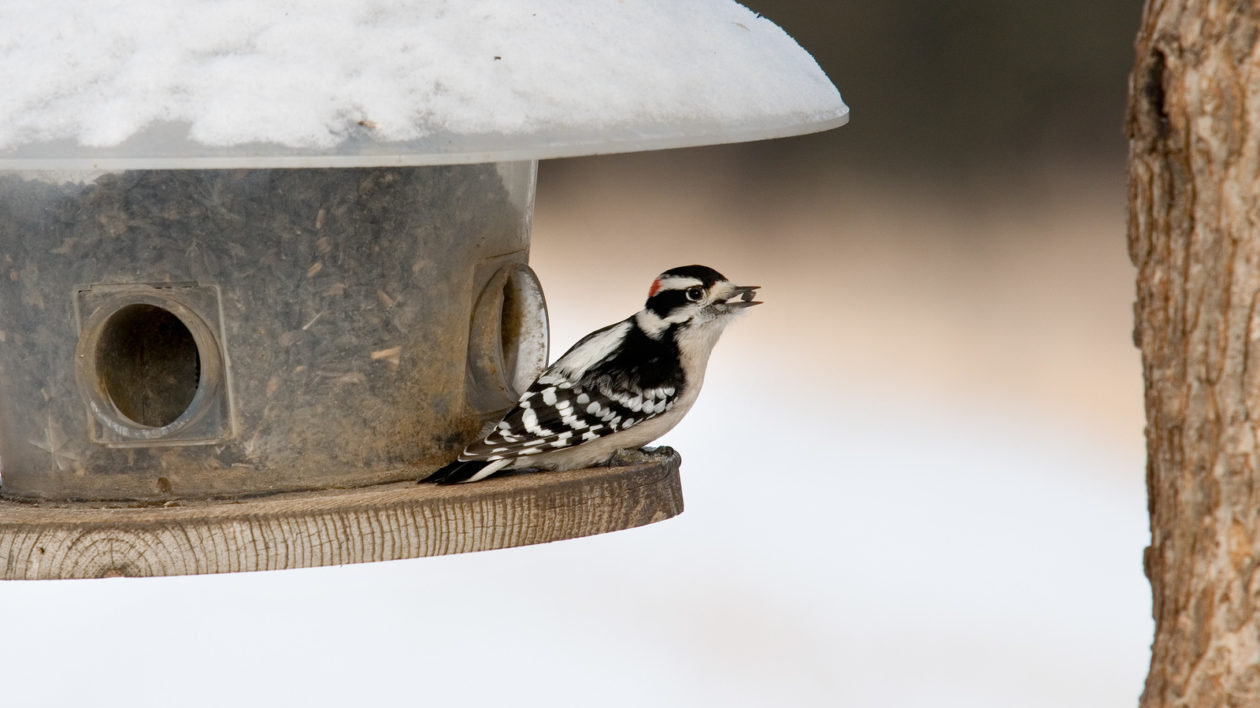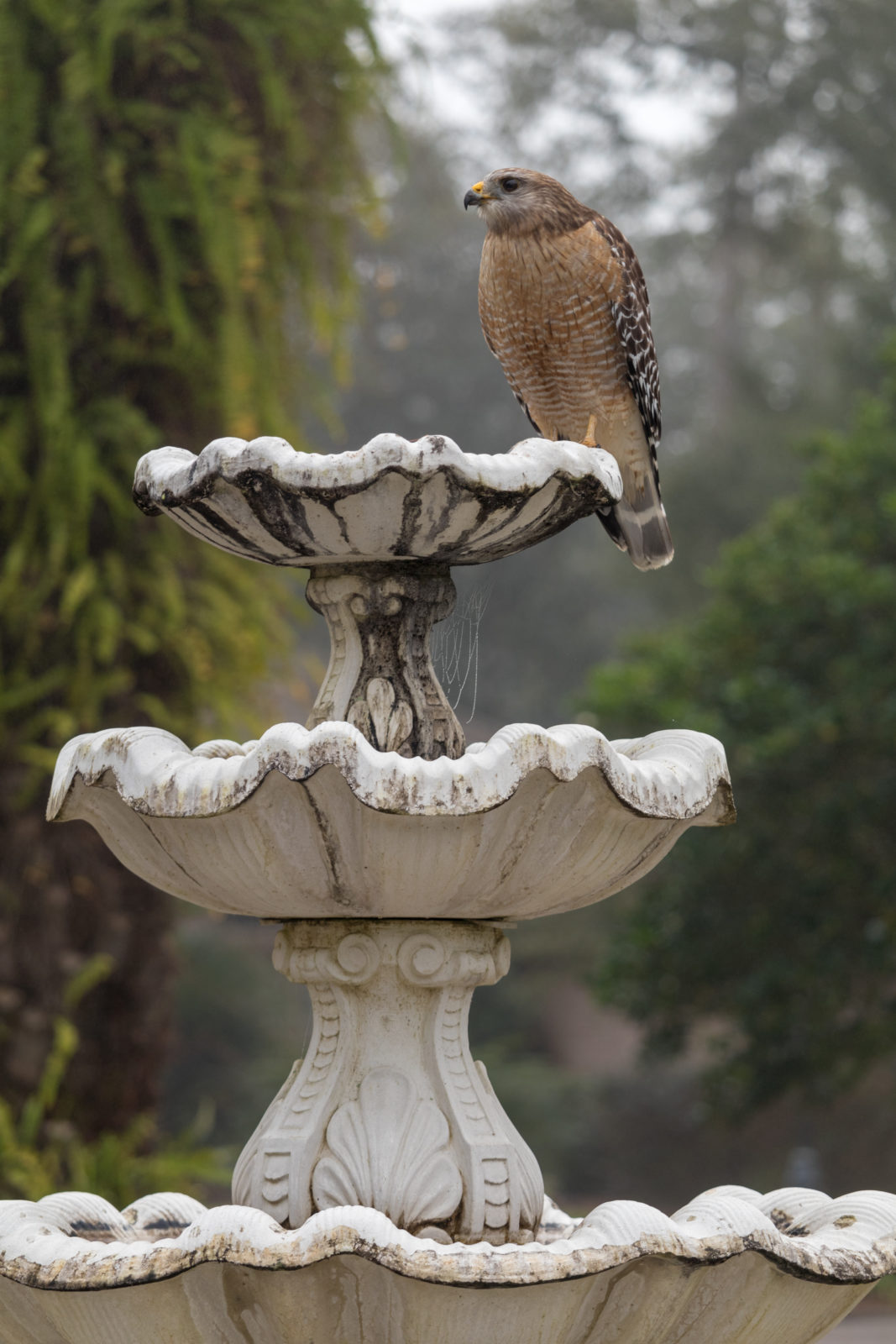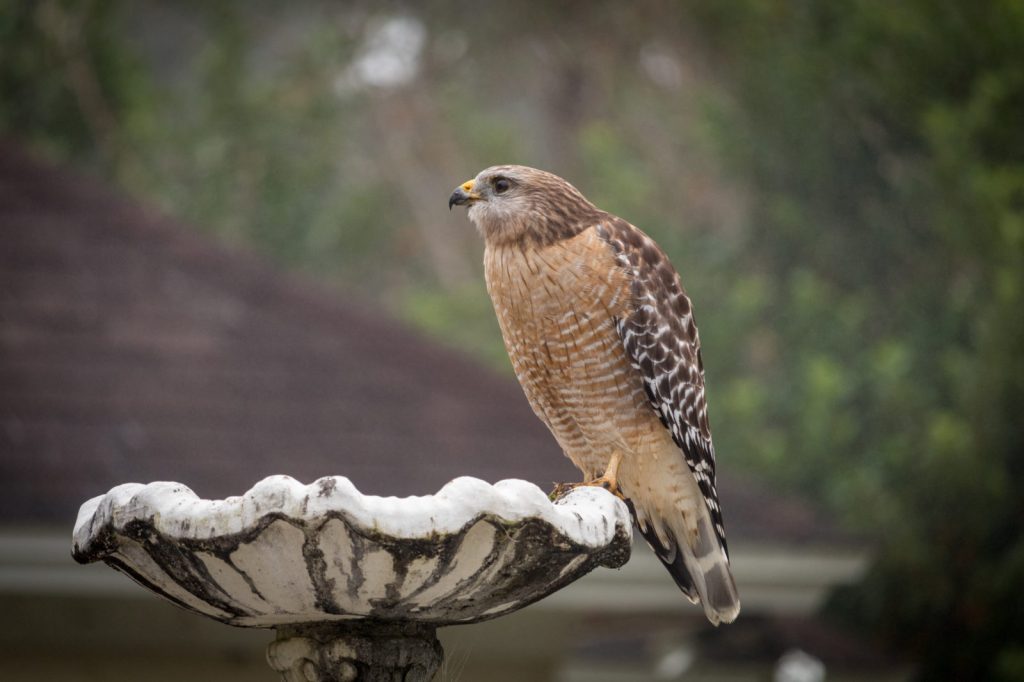Yesterday, I gazed out the window of my home office during a meeting, watching California quail and house sparrows forage beneath native sumac. Suddenly, the bush seemed to explode, with birds flushing in every direction.
A second later, a Cooper’s hawk deftly landed underneath the shrubbery. It began hopping around attempting to snag one of the remaining quail that hunkered down instead of flushing. But the hawk was just a little too late.
Over the years, I’ve noted more frequent sightings of both Cooper’s and sharp-shinned hawks around the neighborhood. You’ve probably noticed the same thing. Across the United States, these two hawk species – both similar looking and in the genus Accipiter – have increasingly colonized urban areas.
A new paper in the Proceedings of the Royal Society B sought to “identify factors that determine the occupancy, colonization and persistence of Accipiter hawks in a major metropolitan area.” In the course of their study, the researchers from the University of Wisconsin-Madison and Cornell Lab of Ornithology found that in the 1990s Accipiter hawks occupied 26 percent of sites around Chicago. After two decades, they occupied close to 67 percent of sites.
It’s a trend reported (often via citizen science) around the country. And a big part of it is the bird feeder in your backyard.
The Return of Raptors
By the mid-20th century, many raptor species, including Cooper’s and sharp-shinned hawks, had declined precipitously. Direct persecution and pesticides had taken a heavy toll. Decades of protection have caused populations to rebound, leading raptors including accipiters to reclaim habitat.
But as the birds spread, they found a new world: one of growing cities. One might initially conclude that predators would not find this new world to their liking, as it was covered in concrete and buildings instead of forests. And that’s certainly true for many wildlife species.

But, as the researchers note in their recent paper, cities present a mix of habitats, including backyards, parks and golf courses with plenty of space. These “novel ecosystems” provide opportunity for cover and also, often, for ample food supplies.
The researchers documented the spread of the two hawk species in Chicago via observation through remote sensing data and Project FeederWatch, a citizen science initiative that has conservationists record sightings throughout the winter.
Initially, the hawks colonized areas outside the city. But they increasingly spread to more and more urbanized areas. The researchers documented usage of areas defined by what they call impervious features: roads, buildings, sidewalks. The more impervious the area, generally, the less “green” habitat.
Initially, hawks avoided these highly developed zones. But eventually, as long as there was sufficient prey, they colonized even the downtown. Over the past two years, hawks went from the city fringes to occupying much of the metropolitan area.
The researchers hypothesized that reforestation would play a role in hawk recolonization. But it didn’t. In fact, wintering hawks preferred areas with fewer trees, perhaps to better hunt prey.

The Hawk at the Feeder
Bird feeding is a hugely popular urban pastime. More than 40 percent of U.S. households feed their backyard birds.
That creates an abundance of birds, concentrated in specific, predictable areas. A predator’s bonanza.
The researchers found that the predator’s persistence in urban areas was most influenced by abundant prey. Based on citizen science and other research across the country, hawks have taken advantage of the bounty of bird feeders across the country.
Cities are rapidly changing. The novel ecosystems they create are also highly dynamic and, often, poorly understood. Songbirds, like northern cardinals, may even expand their range due to feeders. Then predators recolonize, shifting species behavior and abundance.

The researchers cite studies in England that show the recolonization of Eurasian sparrowhawks in cities caused a dramatic decline in house sparrows as well as other species commonly found at bird feeders. The sparrows had exploded in population due to the free food sources and lack of predators. When the predators returned, it caused an immediate shift in the urban ecosystem. It’s not so different, really, than what happened when wolves were reintroduced to Yellowstone and found a park with an over-population of elk.
The researchers note that similar shifts in prey abundance might be expected in Chicago and other cities. Some studies have found that urban hawks are feeding heavily on European starlings, house sparrows and pigeons – all non-native species – so they could actually reduce competition for native songbirds.
Do bird feeders change migration patterns? At least one study found that sharp-shinned hawks on the East Coast were less likely to migrate due to the abundance of bird feeders.
Research into Urban Ecosystems is Vital for the Future of Conservation
Clearly, research into urban ecosystems is vital for the future of conservation. Understanding how species interact, and how species use new habitats, can help better design parks and refuges. Perhaps endangered animals that many consider incompatible with cities actually could recolonize urban areas if given a chance. After all, 50 years ago no one considered the Cooper’s hawk to be an urban bird.
And let’s not forget a key factor in helping scientists understand urban wildlife: you. The observations you make at your bird feeder, at the city park and along a greenbelt trail help researchers understand novel ecosystems and their wild inhabitants. While your observations may seem anecdotal, when combined with millions of other observers, they add up to a significant data set.
So, yes, you really are seeing more hawks at your bird feeder. Enjoy the show this winter: the restoration of the predator-prey dynamic to the urban wild.




It’s a shame the decline of the sparrow,I grew up in the early 1950s and they were every where I for one miss them
Hi, I worked as an Ornithologist for a while, first Cooper’s Hawk I saw was in the Shawnee Forest carrying a snake. A few years later started noticing them in every little town in the motel property or local park. Now they are Everywhere. We had a young pair of Red Shouldered Hawks move in 5 years ago, now hardly see any snakes. When they moved in the Cooper’s pair had to move down the street to the Pine Trees. Apparently the male perished, and the female found a new male, a bright blue one. My friend sent a picture of it, but it was too blurry. Both me and husband saw this bright blue Cooper’s Hawk male and he is something. Hopefully he is still alive and I can get a picture of this beauty. Then last year a pair of Great Horned Owls moved in. The Red Shouldered Hawks and Barred Owls had to scoot down the creek.
While setting on my front porch this morning, a red shouldered hawk landed on my porch railing. He flew to the ground and started looking up at the shrubs. I think he/she was looking to flush something out to eat.
I live in N Carolina and have a bird feeder out all the time. There are many different kinds of birds visit it all year around. Lately there has been a Red Tailed Hawk hanging around. He is beautiful and very hungry, making a meal serving himself from the bird feeder. Kind of sad, but fascinating too.
Great article!
We live near Athens Georgia and have swallow tailed kites that have roosted on our bird feeder. We have had around 40 kites lately in the adjacent pasture, marvelous bird to watch
I’m so glad to understand why we have Cooper’s hawks visit regularly. They have almost become friendly. We’ve noticed they are very curious and they don’t seem to be startled when we come upon them. We live in a suburb on the north side of Indianapolis and have heard reports from several in the area about seeing Cooper’s hawks. I’ve had two very entertaining close encounters with them – one a young hawk who landed at my feet unexpectedly and the other a mature hawk pretending to be limp sitting on my windowsill. He was there for 30 minutes or so and I got worried about him. Called a hawk specialist and she said he’s probably pretending to be lame. Just positioning to surprise the birds. I watched from a foot away on the inside of the house, taking photos all the while, and finally he did fly to the top of the brick wall five feet away – where he had a birds eye view of our feeders just 10 feet away. Reading they might help solve our starling issue was a happy thought.
Matthew,
Thanks for the interesting article. I find that the more citizens know about raptors, the more they appreciate their place in ecosystems. I point out that Cooper’s hawks and Sharp-shinned hawks may look somewhat similar but their size difference is immediately apparent. Sharpies are noticeably smaller than their close accipiter relative the Cooper’s! I spent 15 years doing bird rehab & have intimate knowledge (handling) of all hawk species including buteos, eagle, falco and, of course, accipiter.
The hawks in the OKC area are mostly Missouri Kites, and they are noticeably fewer the past few weeks. Could that be because they are nesting? I see very few in the air and wondered if it was because of the hot weather.
I live in Fresn California, live on regular street, about a week ago I saw 2 hawks on front lawn have not seen any while living here for 13 years, why all of sudden, maybe I have a bird feeder for small birds
Thanks for this! I’ve been seeing a raptor in our back yard here in Ottawa, Canada. I’ve NEVER seen any kind of bird like this in the city. We back onto some green space where there are tons of birds and this guy has been very active. My best guess based on photos and research is a Cooper’s hawk. Unsure why it’s here now but it has plenty of food.
is it possible that a hawk would scare off a whole flock of house sparrows so that the house sparrows leave the neighborhood for days?